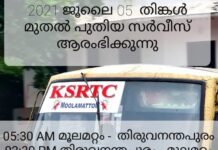Delhi metro is considered by many to be the lifeline of the city. It connects the heart of Delhi to its edges. It allows for a democratic means of travel
for people from all strata and income groups. Or at least, it used to.
After the fare hike which came into eect
on Tuesday, the footfall of the metro is expected to fall further. This hike comes just six months after the
last one in May. In April, a passenger traveling a distance of 35km everyday, say from East Delhi to Gurgaon, was spending Rs. 1,120 in a month
(excluding weekends). Now, he will have to spend Rs. 2,400. This is an increase of 114%, more than double, in just a span of six months.
After the hike in May, June saw a drop of almost 1.5 lakh passengers per day compared to June of 2016. This reduction in the number of people
travelling in the metro renders the arguments given by DMRC to hike the fare baseless. According to DMRC, “The necessity of revision in fares was on
account of increase in the cost of inputs viz. the sta
costs, the cost of energy and the cost of repair & maintenance.” But if there are no longer as
many people using the metro services, then how will the fare hike help in recovering costs?
The Managing Director of DMRC, Mangu Singh, has said that the corporation is not worried about any further drop in footfall. Many daily wage
labourers who participated in the protests against the fare hike said that they will no longer be able to use the metro. A daily wage labourer who will
be earning Rs. 400 – Rs. 600 per day, commuting long distances for work, will now spend Rs. 120 just on metro rides. This will undeniably lead to
workers and other low income groups shifting to cheaper public transport, such as buses, and consequently increase the pressure on roads. The
motive of the construction of metro to reduce congestion on roads, and provide cleaner and more environment friendly means of transport is then
defeated.
The idea of making mass public transit profitable
is itself problematic. A public transport system that is aordable
by the masses is crucial in
facilitating economic growth in other ways. By allowing the citizens of Delhi to make comfortable, fast, and cheap commutes to their workplaces, the
metro directly aids in increasing workers’ eciency.
Thus, the benets
of aordable
public transport are not limited to just its users.
In its third report (2009), the Fare Fixation Committee also agrees that “the decision to invest in metro systems is based on high economic returns
rather than nancial
viability. As with other infrastructure systems, the metro systems also generate externalities which are not paid for and hence
benets
generated by them do not ow
back to the system in monetary terms.”
E Shreedharan, the Metro Man, said in an interview in August that “a good, reliable transportation system is a must to make a city liveable and for its
economic growth. Would Mumbai have been able to survive without its suburban rail services? The government had invested 100% in it. It is losing
money but that doesn’t matter. If the government doesn’t invest, who will? In Kerala’s road transport, the state has entirely funded the construction of
roads, their maintenance and lighting. It only handed over the operation of bus services to private players but most bus services are making losses.
The Kerala government has to subsidise them at Rs 1 crore per day. Metro is way more capital-intensive as it requires everything from land
acquisition to civil works, signalling, and rolling stock. With all that, Metro cannot be a protable
business. The government has to ensure aordable
public transport and hence it must invest in it.”
Hyderabad and Mumbai metros followed a dierent
model than Delhi metro, with a singular focus on making them protable
ventures. Both metro
systems have been spectacular failures. Hyderabad metro remains nonoperational, and only a single line is functioning in the Mumbai metro. Delhi
Airport Express line as well performed dismally when its fares were high in order to recover costs. Reliance Infrastructure, which was originally
operating the line, still faced high losses and ultimately abandoned the project. DMRC took over and reduced fares by 40% which led to a 30% rise in
ridership.
Metros overall are expensive projects and cannot be expected to make operational prots
while being aordable
by all income groups. If the Central
government is willing to invest much higher amounts in projects such as the bullet train, which will serve a minuscule number of people compared to
Delhi metro, then its priorities need to be seriously questioned.
Metro Projects Focussed On Prots Have Always Failed in India, DMRC on the Same Path?
The idea of making mass public transit profitable is itself problematic.










